Q&A: Chef Cyrille Soenen on his early exposure to adobo and what it means to marry a chef | ABS-CBN
ADVERTISEMENT

Welcome, Kapamilya! We use cookies to improve your browsing experience. Continuing to use this site means you agree to our use of cookies. Tell me more!
Q&A: Chef Cyrille Soenen on his early exposure to adobo and what it means to marry a chef
Q&A: Chef Cyrille Soenen on his early exposure to adobo and what it means to marry a chef
ANCX
Published Jun 22, 2020 08:55 PM PHT
Frenchman Cyrille Soenen’s cuisine is, just like his marriage, a rich cross-cultural culinary celebration. Its beginnings can be traced back to the early sixties, a good few years before Cyrille’s birth in 1968.
Frenchman Cyrille Soenen’s cuisine is, just like his marriage, a rich cross-cultural culinary celebration. Its beginnings can be traced back to the early sixties, a good few years before Cyrille’s birth in 1968.
In 1962, a Filipino priest from Bacolod started what turned out to be a lasting friendship with Cyrille’s grandparents. Whenever he visited Paris, the priest, Guillermo Ma. Gaston, now a monsignor on his way to retirement, would often stay at the Soenens’ home in Tremblay en France.
In 1962, a Filipino priest from Bacolod started what turned out to be a lasting friendship with Cyrille’s grandparents. Whenever he visited Paris, the priest, Guillermo Ma. Gaston, now a monsignor on his way to retirement, would often stay at the Soenens’ home in Tremblay en France.
Coming from one of Bacolod’s illustrious families, Father Guillermo was no stranger to grand feasting traditions, similar to his hosts’ long, hearty Sunday lunches that start at noon and end toward dusk. And as it turned out, the man of the cloth was also—pardon le pun —a devil in the kitchen.
Coming from one of Bacolod’s illustrious families, Father Guillermo was no stranger to grand feasting traditions, similar to his hosts’ long, hearty Sunday lunches that start at noon and end toward dusk. And as it turned out, the man of the cloth was also—pardon le pun —a devil in the kitchen.
In the Soenen home, Father Guillermo whipped up Filipino standards, such as adobo and kilawin. His hosts, meantime, served dishes made with ingredients from the Soenens’ vegetable garden where rabbits and chickens were raised as well. Such was the culinary backdrop that Cyrille was born into, providing the early taste memories that informed his palate.
In the Soenen home, Father Guillermo whipped up Filipino standards, such as adobo and kilawin. His hosts, meantime, served dishes made with ingredients from the Soenens’ vegetable garden where rabbits and chickens were raised as well. Such was the culinary backdrop that Cyrille was born into, providing the early taste memories that informed his palate.
ADVERTISEMENT
It came as no surprise then, when Cyrille decided to become a chef. He trained in the classic French cooking traditions, by way of his apprenticeship at the prestigious Ritz Paris, and stints in the kitchens of top Paris restaurants, including Michelin-starred L’Espadon at the Ritz Paris, and Cafe de la Paix, at Le Grand Hotel Intercontinental.
It came as no surprise then, when Cyrille decided to become a chef. He trained in the classic French cooking traditions, by way of his apprenticeship at the prestigious Ritz Paris, and stints in the kitchens of top Paris restaurants, including Michelin-starred L’Espadon at the Ritz Paris, and Cafe de la Paix, at Le Grand Hotel Intercontinental.
Cyrille’s move to Manila some 20 years ago delighted local foodies who’ve followed the aroma of the Frenchman’s cuisine, from Hotel Intercontinental’s Prince Albert Rotisserie, his own outlets —Restaurant Ciçou and Brasserie Ciçou —Resorts World’s Impressions, all the way to Cyrille’s latest endeavor, Dusit D2’s D’Origine at The Fort.
Cyrille’s move to Manila some 20 years ago delighted local foodies who’ve followed the aroma of the Frenchman’s cuisine, from Hotel Intercontinental’s Prince Albert Rotisserie, his own outlets —Restaurant Ciçou and Brasserie Ciçou —Resorts World’s Impressions, all the way to Cyrille’s latest endeavor, Dusit D2’s D’Origine at The Fort.
His tenure as an academic, however, opened up a whole new world where Cyrille found fulfillment. Just like the mentors who guided him in the kitchen during his early years, Cyrille embraced the role of father figure to culinary hopefuls, sharing not just techniques, but also valuable life lessons his students can take with them beyond the kitchen.
His tenure as an academic, however, opened up a whole new world where Cyrille found fulfillment. Just like the mentors who guided him in the kitchen during his early years, Cyrille embraced the role of father figure to culinary hopefuls, sharing not just techniques, but also valuable life lessons his students can take with them beyond the kitchen.
In between serving orders of his popular Kouign Amanns and CroNaps, the Frenchman retraces his culinary arc, and shares the joys and challenges of working in Manila, as a chef and teacher.
In between serving orders of his popular Kouign Amanns and CroNaps, the Frenchman retraces his culinary arc, and shares the joys and challenges of working in Manila, as a chef and teacher.
You spent many years at the Ritz Paris. First as an apprentice, and then as a full-fledged chef. It must have been fun seeing a lot of celebrities.
You spent many years at the Ritz Paris. First as an apprentice, and then as a full-fledged chef. It must have been fun seeing a lot of celebrities.
Hmm … Madonna came and ordered pop corn. And roasted chicken. I mean, of course we did it, but we were expecting something more ... ah ... challenging.
Hmm … Madonna came and ordered pop corn. And roasted chicken. I mean, of course we did it, but we were expecting something more ... ah ... challenging.
ADVERTISEMENT
At that time you were there, starting in 1985, it was already owned by the controversial Egyptian-born businessman, Mohamed Al-Fayed. Was he very visible?
At that time you were there, starting in 1985, it was already owned by the controversial Egyptian-born businessman, Mohamed Al-Fayed. Was he very visible?
Well, we saw him a couple of times because he likes cuisine, and enjoys talking to the chefs. Obviously not to me, because to him, I was nothing.
Well, we saw him a couple of times because he likes cuisine, and enjoys talking to the chefs. Obviously not to me, because to him, I was nothing.
Given its standard, did you have a tough time at the Ritz?
Given its standard, did you have a tough time at the Ritz?
Yeah, it was hard. At the Ritz, either you stay or you get kicked out. You really have to put in the effort, and be careful. The Ritz is not open to everyone, so we are asked to do well. But I really enjoyed it, because of the people around me, real professionals teaching us.
Yeah, it was hard. At the Ritz, either you stay or you get kicked out. You really have to put in the effort, and be careful. The Ritz is not open to everyone, so we are asked to do well. But I really enjoyed it, because of the people around me, real professionals teaching us.
Every great institution has a rockstar molding the next generation of aspiring chefs. At the Ritz, who bore that burden?
Every great institution has a rockstar molding the next generation of aspiring chefs. At the Ritz, who bore that burden?
The star chef at that time was Mr. Guy Legay. To me he was three meters tall. He was so huge, in my eyes. We learned so much from him, not just about cooking, but also about life —how it should be, how you have to be with some people. He was really like a father. I still have a connection to him. Mr. Legay was the one who gave me my Master Chef of France title back in 2015.
The star chef at that time was Mr. Guy Legay. To me he was three meters tall. He was so huge, in my eyes. We learned so much from him, not just about cooking, but also about life —how it should be, how you have to be with some people. He was really like a father. I still have a connection to him. Mr. Legay was the one who gave me my Master Chef of France title back in 2015.
You must have interesting food memories that inspired you to pursue cooking as a profession.
You must have interesting food memories that inspired you to pursue cooking as a profession.
Ah, quite a lot. I have memories of eating everywhere, because my parents loved to go around. We were always camping, visiting farmers or anybody who was producing food or wine. That was important for my parents. Instead of watching football, they would rather sit on a table from lunch up to evening, eating and drinking. That's what we really used to do, spend time on the table with friends and family.
Ah, quite a lot. I have memories of eating everywhere, because my parents loved to go around. We were always camping, visiting farmers or anybody who was producing food or wine. That was important for my parents. Instead of watching football, they would rather sit on a table from lunch up to evening, eating and drinking. That's what we really used to do, spend time on the table with friends and family.
Where did your parents' love of food come from?
Where did your parents' love of food come from?
My grandparents had to cook a lot, because they have a big family with four sons and four daughters. The four sons and one daughter got married so it was always quite a very big table every Sunday.
My grandparents had to cook a lot, because they have a big family with four sons and four daughters. The four sons and one daughter got married so it was always quite a very big table every Sunday.
ADVERTISEMENT
What were your favorite dishes as a kid?
What were your favorite dishes as a kid?
When I was young, I wasn’t attracted to sweets. I was more into protein, and something salty. I liked eating appetizers, like oysters, foie gras … and we always had a big roasted lamb. If not lamb, it was beef. There was always a lot of meat - beef bourguignon, rabbit in red wine sauce, etc. - just healthy, rustic food. Because my grandfather used to have a big garden with a lot of vegetables and chicken, rabbit ... of course we ate that.
When I was young, I wasn’t attracted to sweets. I was more into protein, and something salty. I liked eating appetizers, like oysters, foie gras … and we always had a big roasted lamb. If not lamb, it was beef. There was always a lot of meat - beef bourguignon, rabbit in red wine sauce, etc. - just healthy, rustic food. Because my grandfather used to have a big garden with a lot of vegetables and chicken, rabbit ... of course we ate that.
Many years before you were born, your grandparents became friends with a Filipino who would introduce you to your future wife. That’s an interesting story!
Many years before you were born, your grandparents became friends with a Filipino who would introduce you to your future wife. That’s an interesting story!
There was a Filipino priest who started coming to France in the early sixties. But one time, the French priest in charge of his accomodation wasn’t able to take care of him. So, during mass, the priest asked the congregation if there was anybody who could take care of the visitor.
There was a Filipino priest who started coming to France in the early sixties. But one time, the French priest in charge of his accomodation wasn’t able to take care of him. So, during mass, the priest asked the congregation if there was anybody who could take care of the visitor.
My grandfather, having had eight kids said, “one more will not be difficult.” So he took in the Filipino priest.
My grandfather, having had eight kids said, “one more will not be difficult.” So he took in the Filipino priest.
His name is Guillaume Guillermo Ma. Gaston, of the Gastons of Bacolod - the uncle of Anna, my wife. He is now a monsignor, and about to retire.
His name is Guillaume Guillermo Ma. Gaston, of the Gastons of Bacolod - the uncle of Anna, my wife. He is now a monsignor, and about to retire.
So, I presume he invited you over to the Philippines?
So, I presume he invited you over to the Philippines?
My first visit was in October of 1989 with my brother, Thierry. We stayed in Manila, and visited the Gastons in Bacolod. There I met Anna.
My first visit was in October of 1989 with my brother, Thierry. We stayed in Manila, and visited the Gastons in Bacolod. There I met Anna.
ADVERTISEMENT
First impressions?
First impressions?
Very friendly, hot, everyone smiling.
Very friendly, hot, everyone smiling.
Did you get to taste a lot of Filipino food during that trip?
Did you get to taste a lot of Filipino food during that trip?
I didn’t have to wait for 1989 to discover Filipino food. Monsignor Gaston used to cook when visiting my family. So, even in France, I was already eating adobo, ceviche, Monsignor Gaston’s pineapple cake - he was doing quite a lot of things during his visits.
I didn’t have to wait for 1989 to discover Filipino food. Monsignor Gaston used to cook when visiting my family. So, even in France, I was already eating adobo, ceviche, Monsignor Gaston’s pineapple cake - he was doing quite a lot of things during his visits.
And three years later, you and Anna got married. Did she know what she’s getting into, marrying a chef?
And three years later, you and Anna got married. Did she know what she’s getting into, marrying a chef?
I told her that when she marries a chef, she’s not marrying a “normal” guy. She has to understand the life of a chef - never home, not always there to take care of babies, always late, working during holidays. But we have common interests. Anna loves food, wine, and she also loves to cook.
I told her that when she marries a chef, she’s not marrying a “normal” guy. She has to understand the life of a chef - never home, not always there to take care of babies, always late, working during holidays. But we have common interests. Anna loves food, wine, and she also loves to cook.
So, you were starting a family while also working in Paris’ top restaurants, some of them Michelin-starred. Why did you decide to come to Manila?
So, you were starting a family while also working in Paris’ top restaurants, some of them Michelin-starred. Why did you decide to come to Manila?
Because for nine years, Anna and I lived in France. So I told her that I will find a job in Asia, so she can be nearer her family since she already spent many years with mine. At that time, I was working at Intercontinental Paris. So I learned that they were looking for a chef for the Prince Albert Restaurant at the Intercontinental Manila. It’s like cleaning an elephant with a toothbrush. When you are done at the tail, you need to go back in front.
Because for nine years, Anna and I lived in France. So I told her that I will find a job in Asia, so she can be nearer her family since she already spent many years with mine. At that time, I was working at Intercontinental Paris. So I learned that they were looking for a chef for the Prince Albert Restaurant at the Intercontinental Manila. It’s like cleaning an elephant with a toothbrush. When you are done at the tail, you need to go back in front.
Was living in Manila a shock to your system?
Was living in Manila a shock to your system?
Yes, because my English was not super good. Also, the temperature, the smell in some streets. I used to drive around in a scooter, and when the garbage was not picked up, the smell was awful. And of course, the culture is totally different. But since I wanted to learn about this country, I have to learn all the way. And Anna was always there to explain to me, or make me understand why it was like that.
Yes, because my English was not super good. Also, the temperature, the smell in some streets. I used to drive around in a scooter, and when the garbage was not picked up, the smell was awful. And of course, the culture is totally different. But since I wanted to learn about this country, I have to learn all the way. And Anna was always there to explain to me, or make me understand why it was like that.
ADVERTISEMENT
And work?
And work?
That’s the most difficult shock. I realized, all that I learned, it was only me who knew it. So a lot of training was needed … even the most basic lessons. It’s like cleaning an elephant with a toothbrush. When you are done at the tail, you need to go back in front. Same training and training, repeating things again and again.
That’s the most difficult shock. I realized, all that I learned, it was only me who knew it. So a lot of training was needed … even the most basic lessons. It’s like cleaning an elephant with a toothbrush. When you are done at the tail, you need to go back in front. Same training and training, repeating things again and again.
In short, you had a hard time pushing people to work harder.
In short, you had a hard time pushing people to work harder.
It’s not about striving harder, but to understand why certain ways are better. But since I’m really always in operation, and I love what I’m doing, those who are really passionate learn from me. When I arrived here, I believed that people wanted to become chefs not because they were passionate about the job. They just wanted to work in the kitchen because for sure, they will be eating all the time.
It’s not about striving harder, but to understand why certain ways are better. But since I’m really always in operation, and I love what I’m doing, those who are really passionate learn from me. When I arrived here, I believed that people wanted to become chefs not because they were passionate about the job. They just wanted to work in the kitchen because for sure, they will be eating all the time.
But you stayed.
But you stayed.
Maybe because I’m crazy. And because I get a lot of recognition from the chefs that I formed. Now all my sous chefs have very good positions in big hotels, or some have their own restaurant or business. That’s why I stayed. Also because I have a lot of family here, and very good friends. And I like this country.
Maybe because I’m crazy. And because I get a lot of recognition from the chefs that I formed. Now all my sous chefs have very good positions in big hotels, or some have their own restaurant or business. That’s why I stayed. Also because I have a lot of family here, and very good friends. And I like this country.
I remember a chef from New York, who started his own business here many years ago. He said that Filipinos are very sensitive.
I remember a chef from New York, who started his own business here many years ago. He said that Filipinos are very sensitive.
Yes, Filipinos are sensitive. But I am also especially sensitive to doing something bad. During my first 5 years here, I was really strict, but I was also always fair and just. But after 21 years, and I look back, I believe I did right. If not I would have been deported. What I do is, since Pinoys are jokers, I’d make a joke when someone does something wrong, in front of their colleagues so they cannot get mad. And they will realize that they made a mistake. But there are no hard feelings. You learn a lot. And then you share it. It's not for keeping to yourself. Only the wrong types of chefs do that.
Yes, Filipinos are sensitive. But I am also especially sensitive to doing something bad. During my first 5 years here, I was really strict, but I was also always fair and just. But after 21 years, and I look back, I believe I did right. If not I would have been deported. What I do is, since Pinoys are jokers, I’d make a joke when someone does something wrong, in front of their colleagues so they cannot get mad. And they will realize that they made a mistake. But there are no hard feelings. You learn a lot. And then you share it. It's not for keeping to yourself. Only the wrong types of chefs do that.
ADVERTISEMENT
Since 2018, you’ve assumed the role of Director for Culinary Arts, for both DusitD2 and its sister company, Dusit Hospitality Management College. You’re now also a teacher. Did teaching come naturally?
Since 2018, you’ve assumed the role of Director for Culinary Arts, for both DusitD2 and its sister company, Dusit Hospitality Management College. You’re now also a teacher. Did teaching come naturally?
When you’re a chef, you’re also a trainer. When I moved to this new post, it’s a little bit different, and I had to get training as a teacher. Also, when you’re training people in a resto, you are also working at the same time. In a school, you have more time for teaching. It’s better for me, because I get to spend more time with students.
When you’re a chef, you’re also a trainer. When I moved to this new post, it’s a little bit different, and I had to get training as a teacher. Also, when you’re training people in a resto, you are also working at the same time. In a school, you have more time for teaching. It’s better for me, because I get to spend more time with students.
When you were learning under Mr. Legay at the Ritz Paris, you said that he was like a father to his students. Do you feel like you’ve become a father-figure to your students as well, now that you’re a teacher yourself?
When you were learning under Mr. Legay at the Ritz Paris, you said that he was like a father to his students. Do you feel like you’ve become a father-figure to your students as well, now that you’re a teacher yourself?
Yes, I do. My students tell me that I’m like their father, working with them not just about techniques of a job, but also about finding the perfect balance, between work and life, family, etc.
Yes, I do. My students tell me that I’m like their father, working with them not just about techniques of a job, but also about finding the perfect balance, between work and life, family, etc.
What is your advice to young kids starting on their journey as chefs?
What is your advice to young kids starting on their journey as chefs?
What I say to the kids when they ask ‘where can I start?’, is that it’s very important to go somewhere where there are opportunities to learn a lot of things. When I was studying at the Ritz, of course it was very challenging. But with all those people walking all around me, all master chefs, I learned so much, and I am so happy. And I regret nothing.
What I say to the kids when they ask ‘where can I start?’, is that it’s very important to go somewhere where there are opportunities to learn a lot of things. When I was studying at the Ritz, of course it was very challenging. But with all those people walking all around me, all master chefs, I learned so much, and I am so happy. And I regret nothing.
No regrets at all?
No regrets at all?
Ah, there’s one thing, and we didn’t talk about it. Years ago, I opened my own outlets: Restaurant Ciçou and Brasserie Ciçou. They’re not existing anymore. I hope one day it will be back, because people are looking for it.
Ah, there’s one thing, and we didn’t talk about it. Years ago, I opened my own outlets: Restaurant Ciçou and Brasserie Ciçou. They’re not existing anymore. I hope one day it will be back, because people are looking for it.
I do know that your Kouign Amann, which you introduced to Manila, and your CroNap have a following. But you say you started a club for fans of another special, and rare, French dish?
I do know that your Kouign Amann, which you introduced to Manila, and your CroNap have a following. But you say you started a club for fans of another special, and rare, French dish?
The Wild Hare â la Royale, which I used to cook at Resort’s World’s Impressions restaurant. Basically, for this dish, the rabbit is totally deboned and then stuffed with truffles and duck liver before it is cooked slowly in the oven, braised in stock.
The Wild Hare â la Royale, which I used to cook at Resort’s World’s Impressions restaurant. Basically, for this dish, the rabbit is totally deboned and then stuffed with truffles and duck liver before it is cooked slowly in the oven, braised in stock.
ADVERTISEMENT
At Impressions, I had followers who asked for that every year, because we only serve it during hunting season. Last November, I started the first Club Hare â la Royale in the Philippines. Some would bring their own wine, and not everybody does that.
At Impressions, I had followers who asked for that every year, because we only serve it during hunting season. Last November, I started the first Club Hare â la Royale in the Philippines. Some would bring their own wine, and not everybody does that.
What would you pair it with?
What would you pair it with?
For me, the best wine to pair with this dish would be a nice red Bandol from Provence - a strong wine - or Chateau Neuf du Pape.
For me, the best wine to pair with this dish would be a nice red Bandol from Provence - a strong wine - or Chateau Neuf du Pape.
From what you’ve said about your work as a chef, and now as a teacher, you seem to be very generous with both your time and knowledge.
From what you’ve said about your work as a chef, and now as a teacher, you seem to be very generous with both your time and knowledge.
That's part of our job, as a chef and mentor to kids who want to be chefs. You learn a lot. And then you share it. It's not for keeping to yourself. Only the wrong [types of] chefs do that.
That's part of our job, as a chef and mentor to kids who want to be chefs. You learn a lot. And then you share it. It's not for keeping to yourself. Only the wrong [types of] chefs do that.
You do enjoy teaching.
You do enjoy teaching.
Of course! This is the best thing to do, especially when students are passionate. And if they're not, it's even better. Because you make them passionate .
Of course! This is the best thing to do, especially when students are passionate. And if they're not, it's even better. Because you make them passionate .
ADVERTISEMENT
ADVERTISEMENT




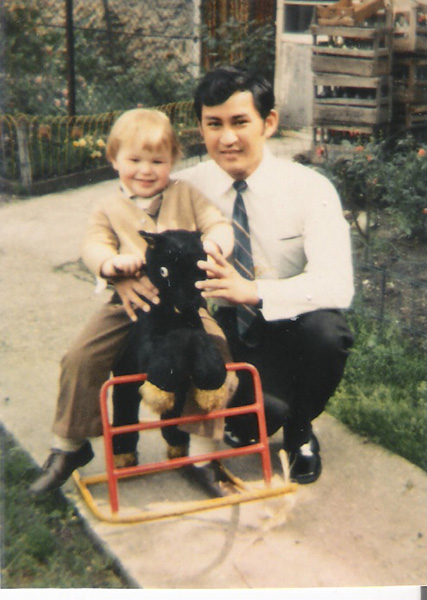
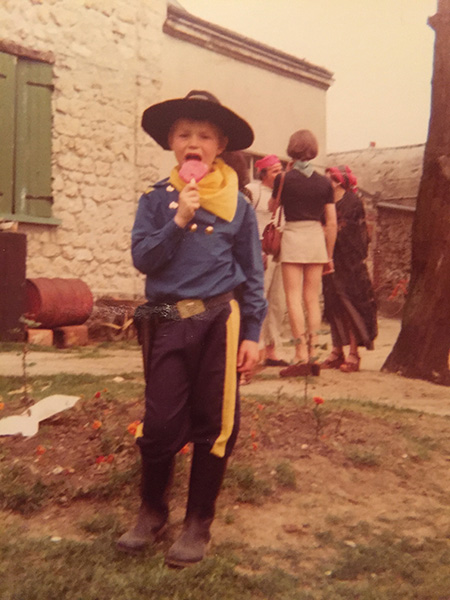
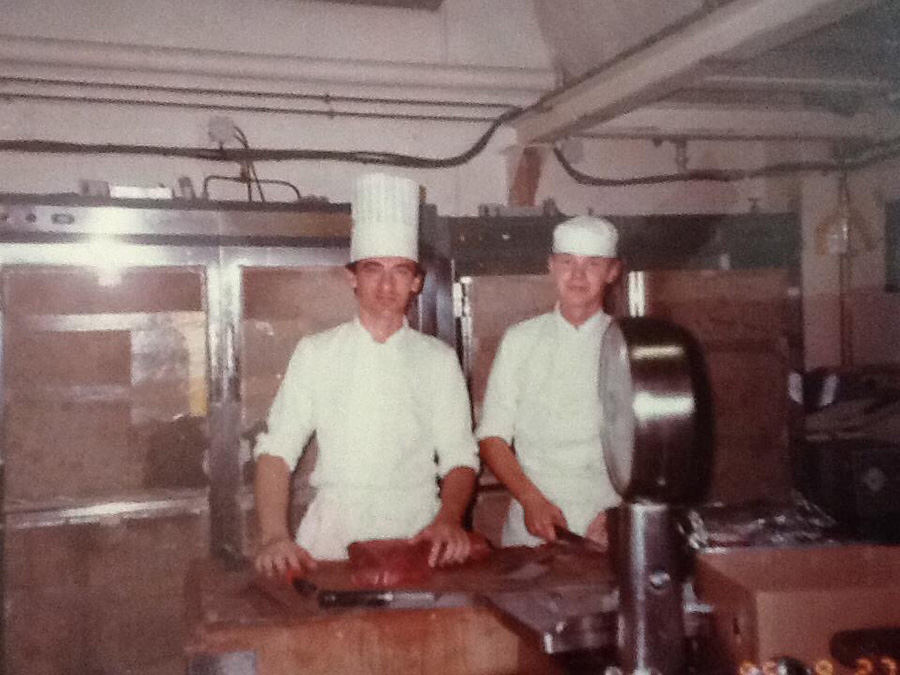
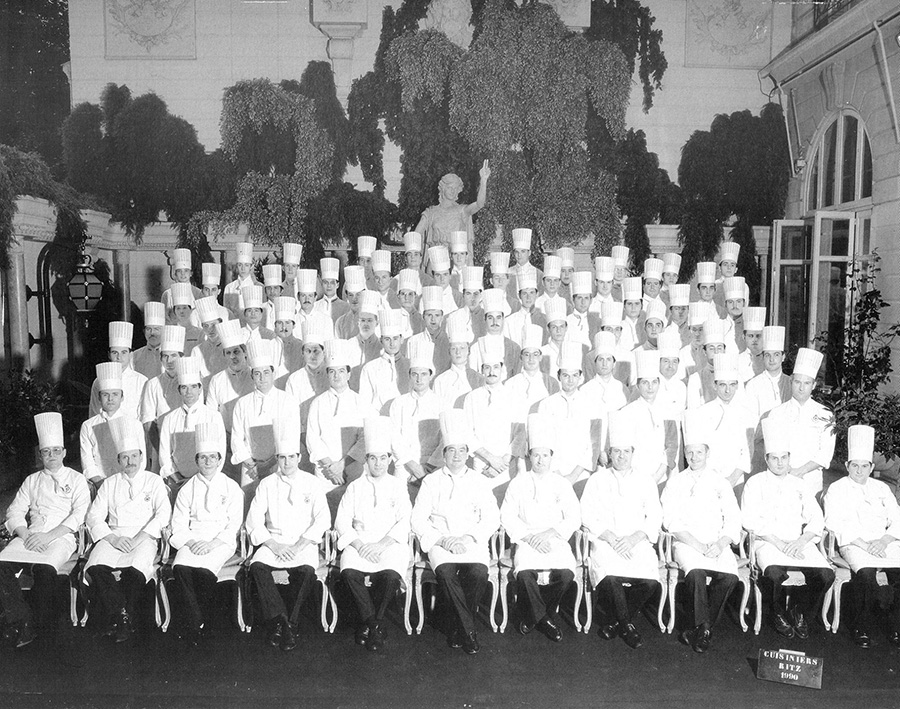


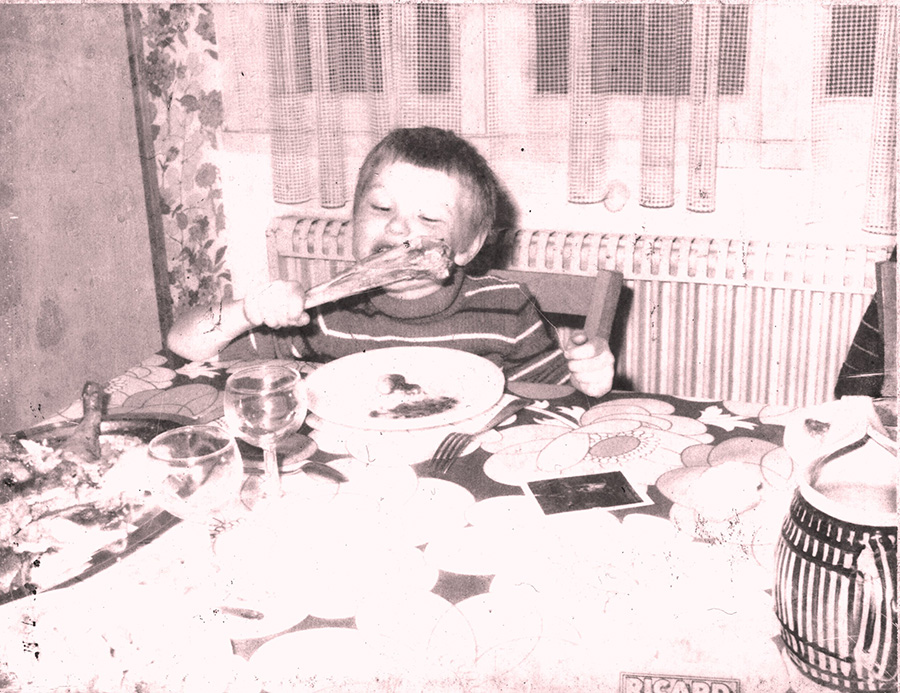
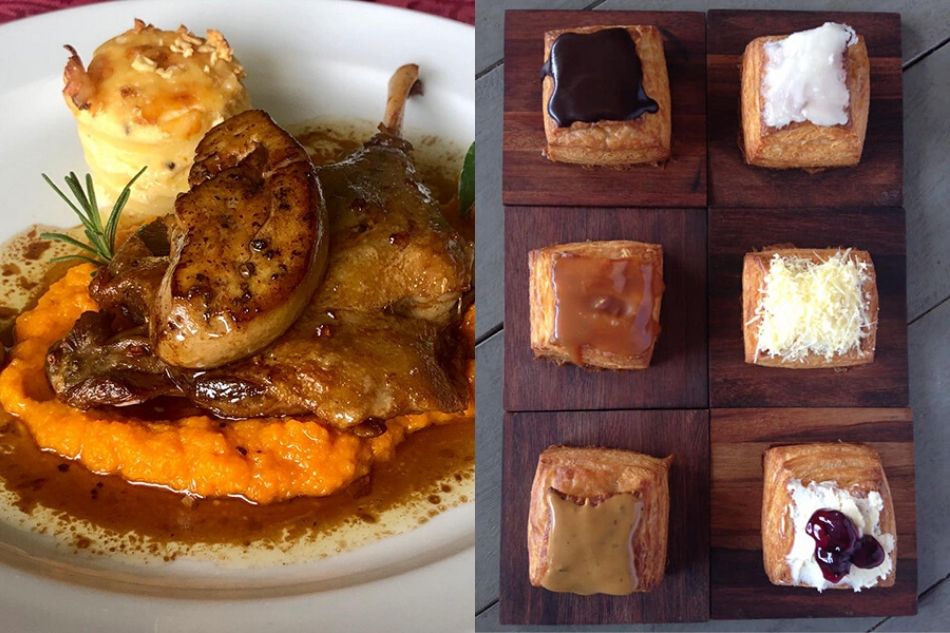

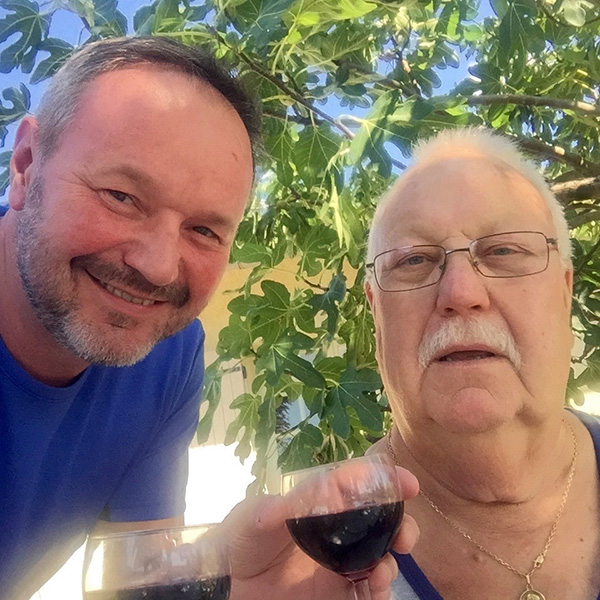

.jpg)